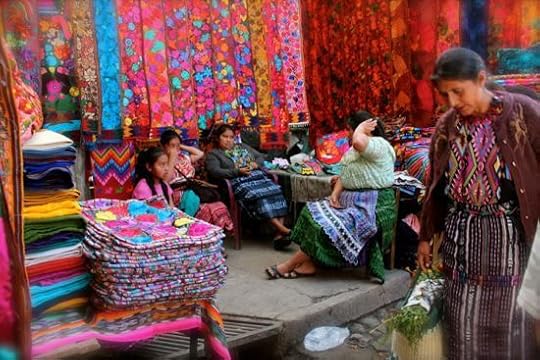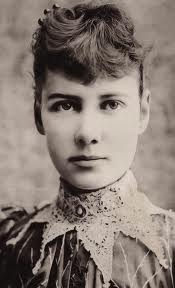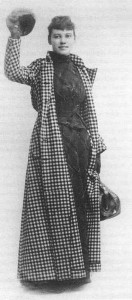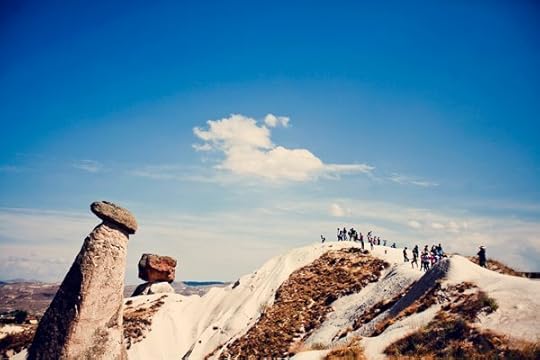Rolf Potts's Blog, page 51
December 8, 2013
Getting Vagabonding or Marco Polo as stocking-stuffers
Vagablogging :: Rolf Potts Vagabonding Blog

It’s once again winter holiday season, which means it’s time to tout my books as stocking stuffers for the travel lovers on your Christmas list.
Vagabonding makes a great holiday gift for:
College or high school students nearing graduation.
Twenty- and thirtysomethings who don’t like their jobs, are currently between jobs, or are considering a sabbatical from work.
Friends and family members who don’t quite “get” the gift-giver’s urge to travel.
Anyone who dreams of (or has talked about) long-term travel, but thinks they’re too poor, busy, disorganized, afraid, uninformed, or old/young to actually do it.

And of course my newest book, Marco Polo Didn’t Go There, is not just an entertaining and engrossing read for the armchair traveler; its “commentary track” makes it an offbeat travel-writing textbook for students and fans of the genre.
Both books are available from online retailers. If you’d like a signed copy of Vagabonding or Marco Polo Didn’t Go There, send me an email at books [at] rolfpotts [dot] com.
Original article can be found here: Getting Vagabonding or Marco Polo as stocking-stuffers
December 3, 2013
3 Intangible gifts to give a traveler
Vagablogging :: Rolf Potts Vagabonding Blog
The holiday season is upon us and on every side we’re being encouraged to buy stuff and to give because the holidays are about giving. But what do you do if someone on your gift list is a traveler and, like me, lives out of his backpack. There’s no sense in giving a bathrobe to a backpacker, and that $99 Soda Stream in the Black Friday flier is useless to someone who’s intentionally homeless. So what do you give a traveler?
Here are three intangibles that could be perfect:
Air Miles
If you’ve got two million miles and you know you’ll never use them, why not transfer a few thousand to the gypsy in your life? A voucher for an airline ticket, miles that you have to use or they’re going to expire, or that companion ticket that you got with a new credit card sign up: perfect. Airfare is often the biggest line item in a traveler’s budget and, who knows, perhaps they’ll use the ticket to pay you a visit!
E or Audio Books
Reading material in your primary language is sometimes hard to come by on the road. When they can be found, books are heavy. Rarely do we carry more than one paper book at a time. However, with our iPods and iPads we can carry thousands of books and read them everywhere. If you’re worried about your loved one reading on a tiny screen, then audio books are an excellent alternative. Gift cards for iTunes or Amazon, or Rolf’s new audio version of Vagabonding, on Audible are sure to be welcome gifts for the nomad you love.
First Night
Want to really make your traveling buddy smile: give the gift of a first night. There is nothing worse than finding yourself in a crappy hostel on Khao San Road in Bangkok after a grueling 30 hour trip from the other side of the world. Give a weary traveler the promise of a first night in a comfy hotel when they hit the ground. Hand make a gift certificate for them and then let them help select a place that best suits their needs.
Now you tell me… what are your best ideas for intangible gifts for the travelers you love?
Original article can be found here: 3 Intangible gifts to give a traveler
December 1, 2013
The quest for the authentic Other is one of vanishing horizons
Vagablogging :: Rolf Potts Vagabonding Blog
“Now the quest for the authentic Other is one of vanishing horizons. One genuine “backstage” is penetrated, only to reveal another fake front-stage: the act of observation changes that which is observed. Hence travelers do not (indeed cannot) succeed in their quest any more than tourists. That is only too clear from the accounts of the great Victorian travelers which are riddled with gross misconceptions. If they were not so serious, as with their concern (for instance) for the ‘mysteries’ of the Middle-Eastern harem, they would be laughable.”
–David Brown, “Genuine fakes,” from The Tourist Image: Myths and Myth Making in Tourism (1996)
(1996)
Original article can be found here: The quest for the authentic Other is one of vanishing horizons
November 28, 2013
Thanksgiving overseas: chocolates and rasperry beer in Bruges
Vagablogging :: Rolf Potts Vagabonding Blog
Growing up in the Midwest, my Thanksgiving was the traditional spread of turkey, stuffing, and pumpkin pie, devoured at a relative’s home in suburban Chicago. But I grew up to be an inveterate traveler and spent the holiday in many places—one of the best was the historic, colorful Belgian city of Bruges.
Several years ago I was serving an internship at the US Embassy in London, and received a four-day weekend as per federal law. I packed a bag, recruited a friend, and took advantage of the holiday to visit one of my favorite Northern European locations.
Once a prosperous medieval port city, Bruges saw its fortunes vanish when its waterway silted up. The Flemish jewel’s centuries of slumber had an unintended boon for twenty-first century travelers: its cobbled alleyways, picture-book canals and magnificent Market Square survive to thrill romantics and history buffs alike.
My friend, a fellow American who was visiting me from back home, had never heard of the place. This presented another great opportunity I relished: playing tour guide in Europe. At first she was skeptical of spending the holiday in an unfamiliar city, but my description of a city that offered authentic Gothic architecture, romantic canals and Crusader-era cathedral housing an ancient relic piqued her interest. She also seemed to warm to the idea when told that Belgium makes the finest chocolate and beer in the world (in fact, Belgium has almost as many beers as there are days in the year).
Having won her interest, we met up in London on a Wednesday, flew to the Brussels and caught a train to Bruges. A steady rain greeted us as we settled into a little bed and breakfast I’d enjoyed on a previous visit. I promised my exhausted buddy that tomorrow would be a lot more fun.
Thanksgiving was spent showing my hometown friend some of Bruges’ charms, like the bell tower that has overlooked the Market Square since 1300 and the historic Basilica of the Holy Blood (home of a priceless relic brought home to Bruges from the Crusades—the reputed blood of Jesus—and the Gothic artistry of the ancient City Hall.
Under a chilly drizzle, we munched on hot, greasy French fries from a stand in the Market Square and admired the pointy gilded architecture. After licking our fingers we checked out the Michelangelo kept in a nearby church and then continued wandering along the canals that lace the city. A major part of the experience was, of course, browsing the numerous chocolate shops lining the alleyways just off the colorful square.
Our thanksgiving feast was in a little Italian café off a cobbled lane, where a pizza was washed down with a delicious locally-crafted strawberry-flavored beer (Frambozen). Dark chocolate, freshly made by a nearby confectioner’s, was the dessert. After introducing my pal to a few more fine Belgian beers (Trappist monk-brewed dark, and a white beer called Dentergems), a post-feast stroll around the backstreets capped off the night.
The following Sunday I returned to London while my friend flew home to Chicago with a bagful of delectably pralines, a well-earned hangover, and a few good stories. I relished playing tour guide in Europe, and I still do.
I’ve had many interesting Thanksgiving experiences before and since, but my holiday spent in the historic, idyllic little Belgian city still brings a smile. Stuffing and family is great, but I really miss that beer.
Original article can be found here: Thanksgiving overseas: chocolates and rasperry beer in Bruges
How to Find Love Abroad: Test Yourself
Vagablogging :: Rolf Potts Vagabonding Blog
“C’mon, try it.”
They floated in a thick, dark sauce. The nails had been cut off, but the rest of each finger stared back at me without eyes from the plastic plate, livid in vinegar. Truncated joints just below the feathers’ line. As I kept staring at my prospective dinner, I wondered how low a man can go to impress a pretty girl.
“So, will you try one?”
Her eyes were inquisitive windows open on her own world. A slot machine of emotions tilted inside of her head, trying to spit out the appropriate row of words to describe me as delusional. When she invited me out to try some of the best street food in Penang, she probably trusted me to be a different, more interesting date.
In Italy, chicken feet are not popular. They are not food. They don’t even appear at the poultry meat section, unless you buy a freshly slaughtered chicken. They get cut and thrown away as trash.
As I approached the soft, darkly simmered meat with chopsticks, my mother’s voice came abruptly in from a lost corner of my memory lane.
“During the War,” she whispered, “your grandmother’s family used to eat them.”
I had to trust her. They couldn’t be so terrible, after all.

picture credit: Flickr/dfinnecy
I looked at my companion profile against a backdrop of sizzling pans and rugged Chinese limbs which rotated in and out of steamy pots. Her attention was completely fixed on my next move, keeping the final verdict tightly squeezed behind stretched lips. My idea of a romantic after-dinner stroll at the seaside was suspended between the plastic extension of my right thumb and index fingers, a soy-sogged poultry mutilation, and her candid foreign perfection.
I finally plucked it.
The virgin taste of tender slime melting in my mouth slightly surprised me as I found a bunch of tiny bones between my teeth.
“Spit them out on the table, it is OK,” she instructed me gently, savoring her relief at not having chosen a cultural idiot as a prospective boyfriend. I unleashed an awkward garter belt of unexploded chicken bones against the orange plastic of the table without injuring anyone.
“Good. Not many foreigners agree to try. Was it so bad, after all?”
The delusion had vanished from her face.
Shaking my head, I realized I just had my jackpot: a row of three Sevens, straight from the deep of her heart, started to fill the coin hopper that was standing empty between us until a minute before.
Original article can be found here: How to Find Love Abroad: Test Yourself
November 27, 2013
Vagabonding Field Report: Largest Market in Central America – Chichicastenango, Guatemala
Vagablogging :: Rolf Potts Vagabonding Blog

Cost/day: $40/day
What’s the strangest thing you’ve seen lately?
Ancient Mayan religious rites being performed in a Catholic cathedral… a unique blend of religions that tells stories about a part of the world with a conflicting history.
Describe a typical day:
Awoke at Mayan Eco Homestead, loaded up our five children into our truck (our overlanding vehicle) and drove toward the town of Chichicastenango. Surprisingly, we were stopped at the state border (between Solola and Quiche) where they tried to confiscate our fruit… we convinced them to let us keep it so we could feed our kids. 
After escaping with just one child vomiting on the extremely windy roads, we finally arrived and parked. Began walking and gazing at the endless merchants selling textiles, stones, antiques, jewelry, coins, beads and so much more.


Explored one of the cathedrals, looked for a bathroom, bought some coconut water for just Q5 (US$0.63) and then got some ice cream. Oddly, my strawberry tasted like peanut butter.
After just a couple of hours, we drove back to The Homestead, to prepare for our upcoming trip to El Salvador.
Describe an interesting conversation you had with a local:
My favorite part of this area was one of the cathedrals near the center of town. Men and women were burning incense and candles. As I solemnly entered the building and watched people praying near the front of the cathedral, and over candles burning in the aisles, a woman approached me. In a combination of English and Spanish she explained that the center aisles were dedicated to worshiping Mayan gods, while the Cathedral itself was dedicated to Christ and the Saints. The two religions were combined, especially at this time of year (Dia de los Muertos was approaching.)

What do you like about where you are? Dislike?
Absolutely loved the cathedral with the religious ceremonies, incense and flowers. The generations of families who make their living based on the daily activities of this market is fascinating to contemplate.

What I disliked is that, with a few exceptions, much of the merchandise available was something I could have bought in Panajachel on Lake Atitlan, or many other tourist destinations in Guatemala. I was expecting to see more produce and animals… more of a local market, instead of tourist centered.
Describe a challenge you faced:
When we got back to where we’d parked our truck (which was on the street in front of a parking lot — because we were too large to fit), they charged us Q25 for parking (US$3.12)… that’s almost three times the price of parking in Solola, where we’ve spent a lot of time.
What new lesson did you learn?
Just because you’re in Guatemala doesn’t mean you can expect the same prices everywhere you go… make it a habit to ask prices before making decisions. At least you’ll be prepared!
Where next?
Next week is the Giant Kite Festival in Sumpango, Guatemala, a celebration for Dia de los Muertos. Can’t wait!
Read more about Living in Guatemala, or connect with me on Facebook.

Original article can be found here: Vagabonding Field Report: Largest Market in Central America – Chichicastenango, Guatemala
November 26, 2013
5 Reasons to stay home
Vagablogging :: Rolf Potts Vagabonding Blog
I’ve been talking a lot lately to folks who are pushing hard towards their dreams. They’re working the equivalent of two full time jobs to break free from the one they’re sick of to change their whole lives. They’re courageous folks. But then, she goes out for drinks with a sister who ends up getting a whole bar full of dummies to mock her dream. And his family spends the holiday calling them absolutely crazy for bending over backwards to give their kids the world, literally.
But you know what I’ve decided? They’re right. All the naysayers. They’re right. Living your dreams is dumb. It’s unrealistic. It’s ridiculous. Why would anyone in their right minds give up the status quo? It’s so easy. So comfortable. It makes so much sense.
Here are five reasons you should give up all of those dreams of long term travel and just stay home.
1. You’ll sleep better
If there’s one thing that long term travel is, it’s one long parade of sleepless nights: The first night anywhere is a tough sell. Add that to mosquito ridden jungle nights with that infernal drone outside your hammock, and the sweltering nights in concrete rooms with bars on the windows but no screens, and the parade of couches and floors that we’re so very grateful to collapse on and, well, you get the idea.
Just stay home in your soft feather bed. Sure, you won’t have the fantastic beach picture, or that story about howler monkeys and jaguars screaming around you in the darkness, but you’ll also probably live longer and you’ll definitely be better rested.
Here’s one of many nights you’ll be glad to have missed.
2. You’ll be more comfortable
Who in their right mind gives up a warm house with a full kitchen, a bathtub, an easy drive to the grocery store and a flat screen T.V. for backpacks, long bus rides plagued by diarrhea, ocean crossings spent leaning over the rail, green with sea-sickness or pushing a bicycle with broken spokes for miles until she finds a repair shop. Who indeed?
All of the critics are right. It’s nuts. It’s too hard. It’s smarter and safer to stay home. Of course if I have to die of something I’d rather it be adventure than boredom, but that’s just me. Listen to the blow-hards in the bar who’ve done exactly *nothing* with their lives and follow the status quo, their lead is clearly the one to follow, over your heart’s.
3. You can pretend “they” don’t exist
If you stay home you can happily pretend that the whole scope of human experience and expression is wrapped up in your particular section of the Bible belt. You can comfortably assume that poverty is defined (and taken care of) by the welfare office of your particular state. You can avoid the unpleasantness of naked children with flies dotting their inner eyes. You can happily believe that “our way” is the “right way” and that everyone, everywhere else clearly just needs to be set aright by being exposed to our clearer way of thinking, or believing, or governance.
If you stay home, you can pretend that “they,” whoever they are, don’t exist; or if they do exist, you can continue in your fantasy that you understand them perfectly. You’ll never have to be brought to your knees by a pile of skulls, or experience the fear of swimming in a dangerous political demonstration, or ask a few seminal questions about the wisdom of the drug war from the point of an AK 47.
Just stay home, it will be easier to continue in your delusion. Because when those walls are broken down, and you have to come face to face with “them,” you have to come face to face with yourself.
4. You won’t know what you’re missing
The best part of giving up your dream and just staying home might be that you’ll never know what you’re missing. If you haven’t every cycled into the yard of complete strangers only to find that they’re chosen family for a lifetime, you’ll never know that wonder. If you’ve never heard your six year old utter the words, “I’ve been waiting for this my whole life,” as he stares up at the Eiffel Tower, then you won’t know how much you want that moment to happen again, and again. If you’ve never stepped onto a brand new continent and felt the rush of the world expanding exponentially, you won’t miss it.
Listen to that harpy who tells you that you’re ruining your life by reinventing yourself. She’s right. There’s nothing on the other side that is better than living life between Walmart, the office and the Elk’s lodge on Saturday nights, nothing you know you’re missing anyway.
It’s a serious downside to living your dreams, you know exactly what you’re missing.
5. You’ll be happier
Seriously, if you stay home, you’ll be happier. Once the travel bug bites, once you let it get a grip on your heart, you’re going to yearn like you’ve never yearned before. For places you’ve been, for places you haven’t been, for the home you left, for people you miss, it’s one big black hole of discontent. You’ll buy a mango in Wisconsin and whine that it’s not as good as the one you picked from a tree you were camped under in Puerto Arrista, Mexico. You’ll be sitting on a perfectly perfect beach on the Andaman Sea and be ungrateful enough to wish you could get a decent glass of southern sweet tea. You’ll be that jerk who can’t get through a dinner conversation without saying something about, “When we were in Africa…” Your kids will come to blows with “normal” kids in the park over the veracity of their camel stories. You can trust me on that.
Original article can be found here: 5 Reasons to stay home
November 25, 2013
Nellie Bly, A Pioneer in Female Solo Travel
Vagablogging :: Rolf Potts Vagabonding Blog
In 1885, a young lady just 21 years old read an article titled “What Girls are Good For” in a Pittsburg newspaper. Her written response to the paper impressed the editor so much, that he offered her a job as a writer, with the pen name “Nellie Bly”. Nellie went on to prove that women had brains, heart, and courage to do anything that men could, despite what the article had previously reported.

Image found on Wikipedia
Nellie began traveling to other places as an investigative journalist, broadening her knowledge of cultural, political, and social issues, and giving raw accounts of the groups and tribes she encountered.
She was one of the first female travel writers, and after studying her, I can see that her vagabond spirit propelled her further than other women of her time and geographical location. She had an unprecedented idea to travel the world alone in fewer days than the male character in the book “Around the World in Eighty Days”. Women did not travel without escorts because it was said that they were too delicate, and that they had too many belongings to take with them. But Nellie, unwilling to be held down by anyone’s expectations or rules, boarded a ship alone with the clothes on her back, a few under garments, a coat, and a small bag of toiletries. This puts my “one luggage per family member” rule to shame.
Not only did Nellie complete the trip, despite several setbacks, she did it in 72 days, 6 hours, 11 minutes, and 14 seconds after her departure. Her arrival home was met with applause by men and women alike, as she accomplished something no one else in her position had done before.

Image found on Nellie Bly Online
From this point in her life on, Nellie made decisions that rung true to her own convictions and beliefs. She traveled to many more places that American women dared not, and she uncovered and reported a myriad of disgraceful political and social issues that were hidden from the public. In one of her adventures, she posed as an insane person in order to get an inside look of life in an asylum. When she revealed the conditions through her detailed report, a judge granted a huge budget increase to care for the patients there.
When each of us takes a step on a journey, we do it out of conviction or curiosity. When we find our strength to leave familiarity for something more meaningful, we are raw, vulnerable, and unable to use our comforts and belongings as crutches. We see things the way they really are, and we relate to people more honestly and openly. Often we find more than we set out for. In the beginning, Nellie just wrote a letter addressing the fact that women were valuable. In the end, she became one of the first well-known female travel writers, investigative journalists, and advocates for social justice of her time. She shaped herself and her surroundings with each step she took in her journey- just like we do as we travel our own roads.
Sources and more information on Nellie:
Wikipedia
Nellie Bly Online
PBS
Bio.
Original article can be found here: Nellie Bly, A Pioneer in Female Solo Travel
November 24, 2013
In global cities, the distinction between traveler and local is being erased
Vagablogging :: Rolf Potts Vagabonding Blog
“The rigid distinction between romantic world travelers and a locally based, sedentary population is rapidly being erased. Cities are no longer waiting for the arrival of the tourist — they too are also starting to join global circulation, to reproduce themselves on a world scale and to expand in all directions. As they do so, their movement and proliferation are happening at a much faster pace than the individual romantic tourist was ever capable of. This fact now prompts the widespread outcry that all cities now increasingly resemble one another and are beginning to homogenize, with the result that when a tourist arrives in a new city he ends up seeing the same things as he encountered in all the other cities. This experience of similarity among all contemporary cities often misleads the observer to assume that the globalization process is erasing local cultural idiosyncrasies, identities and differences. The truth is not that these distinctions have disappeared, but that they in turn have also embarked on a journey, started to reproduce themselves and to expand.”
–Boris Groys, “The City in the Age of Touristic Reproduction,” Art Power (2008)
Original article can be found here: In global cities, the distinction between traveler and local is being erased
November 20, 2013
Vagabonding Field Report: Istanbul to Cappadocia, Turkey
Vagablogging :: Rolf Potts Vagabonding Blog

Cost/day: $50
What’s the strangest thing you’ve seen lately?
All of Cappadocia! The Fairy Chimneys, the cave hotels, and underground cities made it seem like I was on another planet. It was weirdly beautiful and peaceful.
Describe a typical day:
We spent a lot of time wondering around, trying local food, browsing the open air markets, visiting temples, looking at maps, taking photos, and smoking the hookah at dinner. One day we rented a car and drove 9 hours from Istanbul to Cappadocia, which was an interesting roadtrip. There weren’t that many people on the road once you left the highway, and we saw some beautiful lakes and sunflowers along the road. My favorite part of Cappadocia was watching the sunset from the Fairy Chimneys with no one else around.


Describe an interesting conversation you had with a local:
One local tried to sell me a baby duck. I was overcome with cuteness and almost succumbed to a new pet traveling duck, but I managed to leave duckless.
What do you like about where you are? Dislike?
I really liked Turkey, it was colorful and beautiful. The food is amazing and people were mainly friendly. It felt very exotic, and Cappadocia is one of the most beautiful and interesting places I’ve seen. I liked the warm weather. My dislike would be the crowds in parts of Istanbul, which came with traffic and smog.


Describe a challenge you faced:
Navigating the roads for 9 hours in a different country and finding our way to a remote town was a bit challenging. The drivers weren’t as aggressive as I had worried and we were able to find our way sans GPS, but it was a taxing day nonetheless.


What new lesson did you learn?
I learned that there is something magical and unexpected about Turkey, and I really need to go back and spend more time there.


Where next?
I am heading to Peru in March of 2014! More travels here!

Original article can be found here: Vagabonding Field Report: Istanbul to Cappadocia, Turkey
Rolf Potts's Blog
- Rolf Potts's profile
- 323 followers





